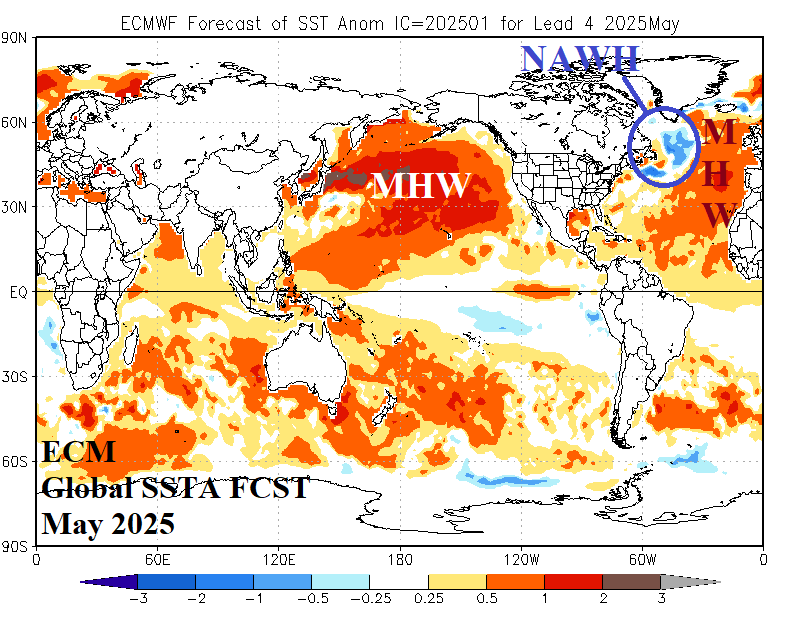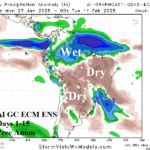
South America 15-Day AI Vs. Dynamic Model Rainfall Forecast
01/27/2025, 11:07 am EST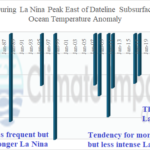
Subsurface Moderately Cold in Equatorial East Pacific as La Nina Likely to Linger well into NH Spring
02/02/2025, 9:44 am EST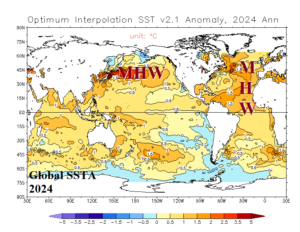
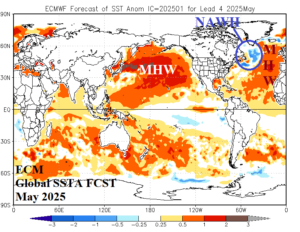
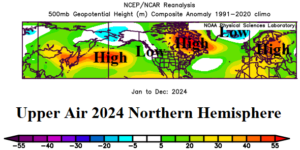
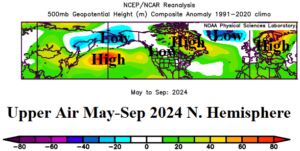
Fig. 1-4: The global SSTA for 2024, ECM May-25 global SSTA forecast, 500 MB anomalies for the Northern Hemisphere in 2024 and May-Sep 2024.
Discussion: During the current decade, a marine heat wave (MHW) east of Asia has steadily intensified and become the most dominant regional SSTA influence on northern hemisphere climate. During the second half of the previous decade, the Northeast Pacific MHW and North Atlantic warm hole (NAWH) were influential on the northern hemisphere climate pattern. Added during the past 12-18 months is a persistent MHW west and southwest of Europe. In 2024, the annual global SSTA analysis vividly reveals the West Pacific and eastern North Atlantic MHW’s (Fig. 1). The latest ECMWF global SSTA forecast for May 2025 reveals the northern hemisphere warm season begins with an explosive west-to-central North Pacific MHW while the eastern North Atlantic MHW also flourishes (Fig. 2). Note the vivid return of the NAWH during May south of Greenland. The prevailing upper air pattern is shaped by these regional SSTA regimes. Last year, on average, the West Pacific MHW was linked to an extensive high-pressure area extending from Japan eastward past the Dateline, compensated for by a trough into the Northwest U.S., and followed by an amplified ridge over Quebec and farther downstream over Europe (Fig. 3). The Europe ridge may have been compensation for the trough to the west of the East Asia ridge. During the northern hemisphere’s warm season in 2024, the high-pressure areas remain locked-in (Fig. 4). The SSTA/500 MB anomaly relationships of 2024 should linger in 2025. Consequently, the JUN/JUL/AUG 2025 climate forecast for Europe/Western Russia features a high risk of anomalous heat and dryness (Fig. 5-6) likely leading to a widespread drought.
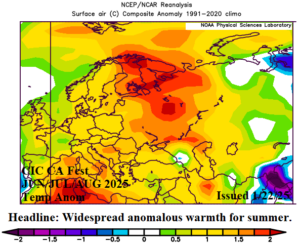
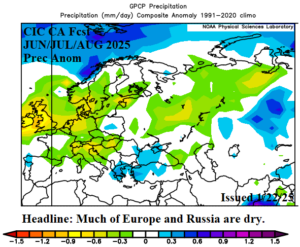
Fig. 5-6: The Climate Impact Company meteorological summer 2025 temperature and precipitation anomaly forecast for Europe.

